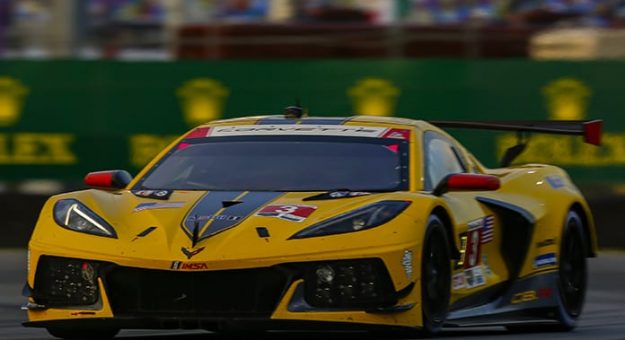NASCAR grew to fame and fortune by racing on dirt and paved short tracks and moved on to bigger tracks, such as Darlington (S.C.) Raceway, and eventually Florida’s Daytona Int’l Speedway and Talladega (Ala.) Superspeedway.
But, despite its roots, there’s always been a road-racing component mixed into NASCAR’s scheduling and it has provided more than its share of memorable battles, moments and controversies.
The season finale was run for several years at Riverside (Calif.) Int’l Raceway prior to its sacrifice to the southern California real estate market.
As this season began, the largest number of road-course events in NASCAR history awaited teams, as seven races on road circuits were planned for the NASCAR Cup Series. Seven out of 36 equates to nearly 20 percent of the events being run on road courses.
If you went by the traditional scheduling from years past, that would amount to two full seasons plus one race, as the old schedule featured races at Watkins Glen (N.Y.) Int’l, Sonoma (Calif.) Raceway and the ROVAL at Charlotte Motor Speedway.
The 2018 addition of the ROVAL was earth-shaking in its own right, but this year’s slate is chock-full of right-and-left turns.
Chief among the additions this year is the inaugural race at Circuit of The Americas in Austin, Texas, a 20-turn, 3.41-mile road course winding through undulating lands outside the capital city.
Indy cars and Formula One race there, as does MotoGP, and it’s definitely “technical,” as road-racing teams would put it.
The season actually opened with a road-course race as the non-points Busch Clash was run on the road course at Daytona. Because the event at California’s Auto Club Speedway was moved due to the pandemic, it was run on the road course at Daytona on Feb. 21.
The inaugural event at COTA is May 23, and the annual trip to Sonoma is set for June 6. Road America, long a staple on the NASCAR Xfinity Series schedule, is the July 4 race this year, and the annual trek to Watkins Glen is Aug. 8.

The week after that, the Cup Series cars take on the road course at Indianapolis Motor Speedway for the first time. The ROVAL at Charlotte Motor Speedway finishes the road-course segment of the schedule on Oct. 10.
That makes reigning Cup Series champion Chase Elliott happy.
Five of his 11 Cup Series victories have come on the twisty bits. The Georgia driver has won twice at both Watkins Glen and the ROVAL, and he won the first race on the Daytona road course last season.
Elliott was also one of several NASCAR drivers who participated in the annual Rolex 24 At Daytona.
Elliott said that doing a race like the Rolex 24 is part of his overall plan – and it won’t hurt to learn a few more things now that road racing makes up nearly a fifth of the Cup Series schedule.
“To me, being diverse behind the wheel is a great thing,” he said prior to the 24-hour race. “I think that applies to anything you do. I think of my dad and he wasn’t really a car guy. He enjoyed airplanes and bulldozers and he could drive all that stuff. It didn’t matter what it was. I’m a big believer in that and I felt like it was the right time to step out of the box.”
Driving a purpose-built road-racing car, like the Cadillac DPi that Chip Ganassi Racing now fields, is a way for Elliott to take road course-specific machinery and translate it to what he does inside his championship-winning No. 9 Chevrolet for Hendrick Motorsports.
“In the sim, I had a pretty good understanding that the braking zones were going to be a lot deeper, it’s a higher-performance car and it’s lighter with bigger brakes than the Cup cars have,” he said. “That all made sense to me. The transition off the brakes rolling into the corner, that sense of speed and security is at a much faster pace than I’m used to seeing with my eyes. You get to driving one thing for a long time and you have that sensation of what is too fast for a tight corner or what’s not. That center of the corner pace is up from what I’m used to doing on the Cup side. It may translate here or it may not.”
To continue reading, advance to the next page.
